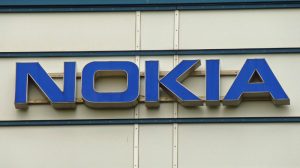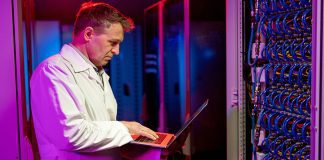
The aim is to monetize real-time environmental data and using existing network assets to create new revenue streams.
Whether it’s being used to analyze operational data, or helping better target marketing and sales activities, data is a powerful differentiator for network operators. But it can be so much more. The right data can also help operators create new revenue streams, allowing them to diversify, reduce risks and improve revenue. However, those interested in creating revenue streams from data have many obstacles to overcome.

Asad Rizvi, head of Global Services business development at Nokia, said: “Cities need to become digital in order to efficiently deliver services to their habitants. Smart infrastructure, which is shared, secure, and scalable, is needed to ensure urban assets and data are efficiently used.
“We can help cities with that. In addition, we can help operators generate new revenue utilizing their existing network by providing solutions for smart city players, such as city, transport, travel and public safety authorities.”
The challenge Nokia Sensing as a Service hopes to address
Currently, when most telecom operators consider their data, they think primarily about telecommunications data. Only by branching out and collecting additional data sources, Nokia argues, can they deliver a data service or product which might generate revenue.
Similarly, many telcos are struggling to create the secure, streamlined payment platforms which might reliably monetize their data. Deploying a secure back-end, according to Nokia, is the only way to deliver a reliable revenue stream.
Nokia Sensing as a Service aims to address these challenges as well as unlock revenue from telco mobile sites. By using these existing sites and equipment, Nokia Sensing as a Service will assist to extract and then sell environmental data to a range of new customers. With a built-in micropayment platform, based on secure blockchain technology, Nokia adds the mechanism to transact and generate reliable new revenue streams.
Sensors and site hardware
Nokia’s proposition is that it will manage all hardware installations, equipping each participating telco’s existing network sites with environmental sensors and edge gateways. The sensors it uses offer, Nokia claims, greater density and coverage than conventional environmental data collection tools. Some sensors can provide data to a 10m level of accuracy. While Nokia prefers to use its own gateways, this does not preclude telcos using other third-party systems and platforms.
Altogether, the collected sensors enable telcos to deliver more granular as well as real-time insights. The sensors provide a broad array of datasets, including:
- temperature
- humidity
- pressure
- multichannel gas
- accelerometer/gyroscope
- noise
- air quality (CO2, NO2)
- vibration
- power consumption (AC/DC)
- light
- dust – large particles (PM10) and small particles (PM2.5).
Nokia is also able to provide additional sensors, depending on each telco’s specific data requirements.
While generating rich environmental data, sensors can better predict when telco sites will require maintenance and monitor electricity consumption. These add a telco operational dimension.
Data processing and storage
Nokia is the source for a complete platform for collecting and processing sensor data. This exploits the Nokia AVA platform. Alternatively, telcos can choose from Amazon IoT or Microsoft IoT.
In effect, Nokia offers a range of options based on your needs for data transfer. Similarly, it offer control over where telcos store sensor data (for example, in Azure, AWS or a telco’s private cloud).
Analytical services
Nokia has a range of analytics services to add even more intelligence and value to the data a telco collects and is able to sell. This includes analysis of:
- real-time environmental data
- unusual behavior and particle detection
- future values prediction
- site monitoring and hardware control
- anomaly detection.
The Nokia AVA platform connects to a range of cognitive analytics solutions. These collect, process and analyze data – which become the driver to deliver increased value through existing telco assets. In effect the Nokia Sensing as a Solution is available so that telcos can can provide essential insights based on enriching the data collected. Then customers, like smart cities or enterprises, can visualise how they perform and then take actions to improve operations.
Blockchain-based payment platform
Nokia claims it has a: “complete micropayment platform can help (customers) quickly generate new revenue from this collected data.” Based on blockchain, the distributed ledger technology being adopted by finance as well as a range of other industries, this payment platform enables telcos to integrate third parties into a telco’s data market.
Because every transaction is verified against other peers in the blockchain network, a telco can be sure that its payment platform is secure. The intended effect is to expand a telco’s customer base and service offerings.
Smart business models
The Nokia Sensing as a Service offers either a traditional CapEx investment model or a revenue-sharing service model. Each ensures a telco can generate new data and new revenue streams – while minimizing upfront costs and risks.
Key to Nokia’s approach is that it says it will work with each telco to identify a business model which will works for that telco. Nokia even promises it will: “even test the market before deploying your solution”. Examples of potential revenue opportunities, according to Nokia, include:
- weather companies: need real-time weather data to expand their portfolios; with data from the sensors, they can significantly improve forecasting accuracy, adopt new climatology models, deliver more granular weather forecasts and deliver intelligent alerts for extreme weather conditions
- healthcare providers: can build intelligent patient alerts around environmental data sources; for instance, asthma patients or those suffering from extreme allergies might receive an automatic alert if a weather event or dust build-up in a certain area might imperil their health
- smart cities: could improve living conditions and security with up-to-date traffic and movement insights; telcos could offer data as a monthly, rolling service, thereby assisting cities to become smart without large CapEx investments
- public safety organizations: can use environment data to predict and react faster to forest fires, hurricanes or other natural disasters
- insurance companies: can create more accurate risk profiles and adjust their pricing of insurance products and services; with a range of environmental data, they can improve their understanding of risk factors across different geographies – and even different parts of the same city
What does it mean?
This Nokia Sensing as a Service announcement is pitched at telcos. Given the MWC setting this is entirely logical – and telcos do have the infrastructure in place on which to build at minimal cost. That Nokia also offers a revenue sharing option will attract many.
The real beneficiaries will most likely be the the general public and enterprises, if they can benefit from the types of data as applied in the examples above. Therein lies a potential commercial Achilles heel. The telcos must deliver before smart cities or healthcare or patients or insurance companies or other enterprises benefit. Telcos are not noted for being ahead of any game.
Finally.the blockchain dimension is pretty nebulous (as described). It may add value. But there is the risk, as with the Mobivity announcenent at MWC 2018, that Nokia Sensing as a Service has added blockchain to sex-up the offering. Telcos and enterprises should look hard at whether this adds value.

























